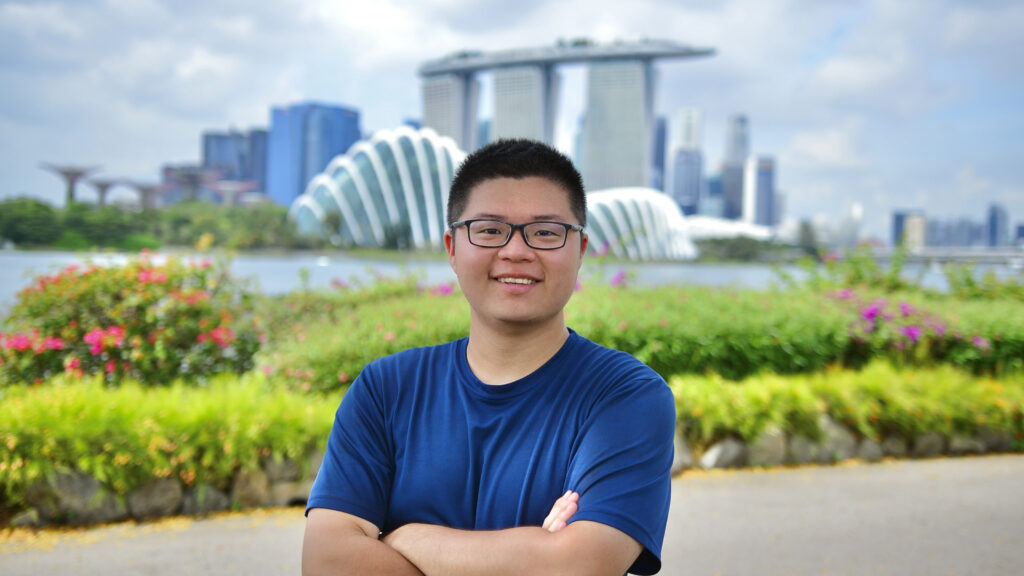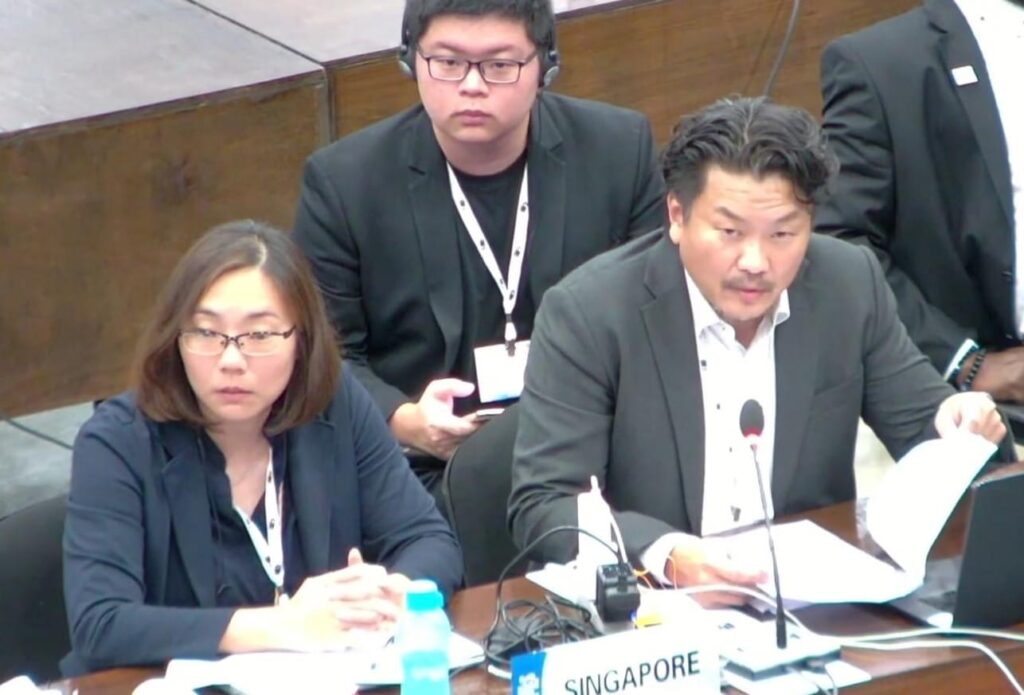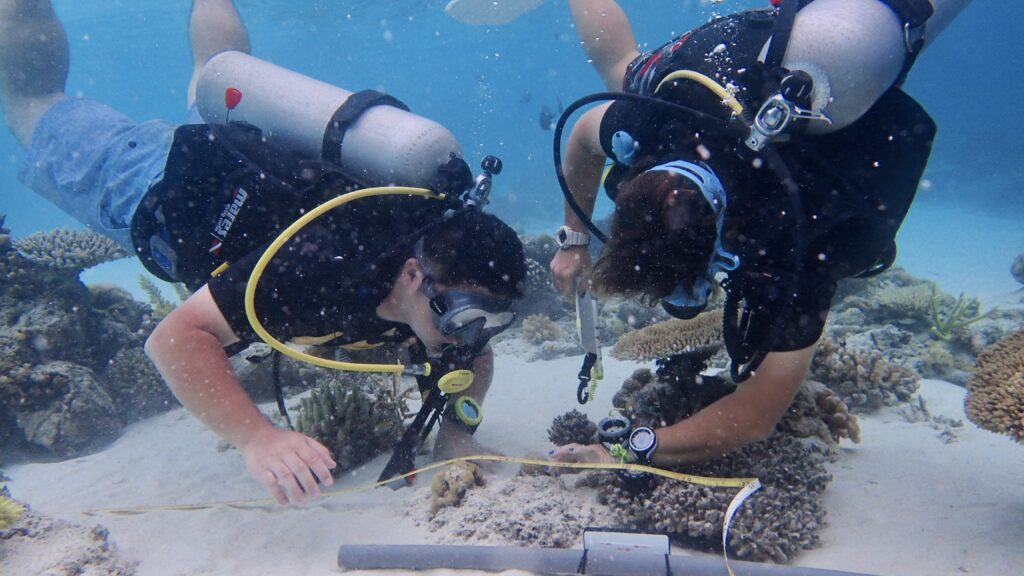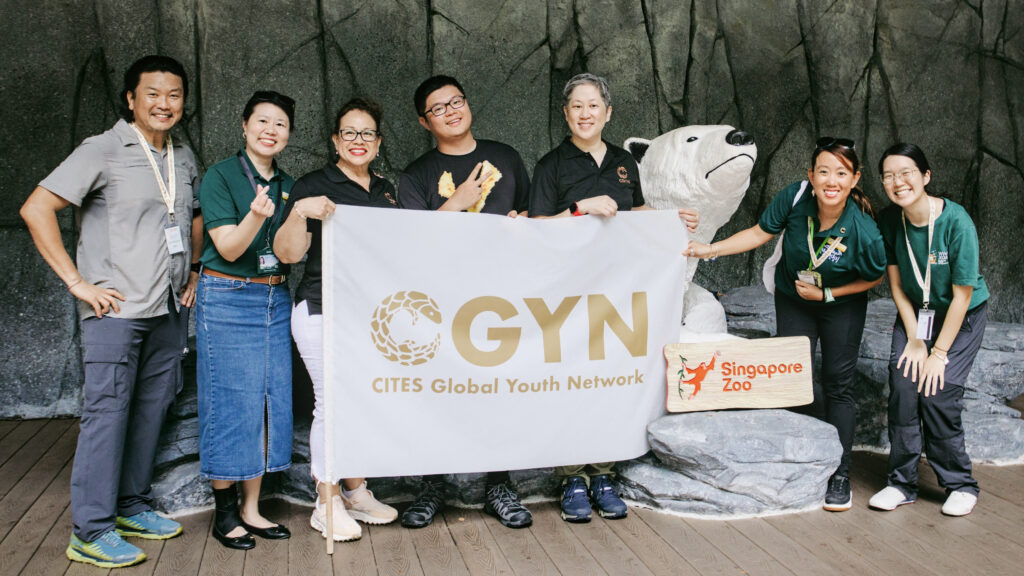Talk less, do more: Student conservationist drives change with bold actions
June 6, 2024
IN BRIEF | 10 min read
- Final-year student Ting Wai Kit (NUS Geography) leverages his skills, industry connections, and rapport with the youth to help drive tangible change and promote practical conservation efforts.
As environmental group leaders and government representatives discussed the plans to develop Dover Forest as part of an engagement session in 2021, then-second-year Geography major and NUS College (NUSC) student Ting Wai Kit noticed that something was missing from the conversation.
Concerns had been raised about the zoning of the Ulu Pandan site for residential use over the need to protect the local plant and animal species, and Wai Kit saw an opportunity to contribute with the skills he had picked up in university.
“I felt compelled to bridge the gap,” said Wai Kit. “Without thinking, I took the microphone and asked if I could get permission to do an independent environmental impact assessment (EIA) (of the area).”

The National Parks Board (NParks) gave him both the permit he needed and the EIA report they had commissioned. Armed with that and equipment borrowed from the NUS Geography and Environmental Studies faculties, Wai Kit recruited four classmates and turned his spur-of-the-moment idea into a school project for their geography course.
This episode proved to be the tipping point for Wai Kit’s dream of making an impact in the environmental scene, particularly in conservation, which had guided his initial decision to major in Geography at NUS.
After spending a semester surveying Dover Forest East, the group presented their findings on the ecological value of a stream in the area in a 152-page report which influenced a decision to preserve the stream as part of the planned housing development.

He was invited back for more engagement sessions on developing other nature areas, and doors began to open for him. He was offered an internship by NParks that enabled him to work on a broad range of projects and travel to Panama as part of the Singapore delegation to the Convention on International Trade in Endangered Species of Wild Fauna and Flora (CITES) Conference of the Parties in November 2022. Following the conference, he co-founded the CITES Global Youth Network (CGYN) which was spearheaded by Singapore, with support from NParks and the CITES Secretariat, to create a global platform for youths in governments around the world to network, share knowledge, and contribute to discussions about wildlife trade.
As he waits to graduate this July, Wai Kit will soon embark on his first job with a conservation organisation where he will work on projects closely aligned with his interests. These include continuing to build up the CGYN and exploring opportunities with Singapore-based non-profit conservation organisations. In the coming years, he also plans to pursue a master’s degree specialising in CITES and an internship with the CITES Secretariat.
“I realise now that my decision to speak up and take decisive action significantly accelerated my career’s progress,” Wai Kit wrote in a paper for an NUSC course on personal reflection. “(It) was more than speaking up, it was about being constructive and embodying the proactive change I wished to see in nature conservation,” said the former co-president of the NUS Students’ Association for Visions of the Earth (NUS SAVE).
A journey of discovery
Wai Kit discovered his interest in environmental issues as a polytechnic student when he noticed a trend in the topics he selected for his school activities. Out of the broad range of options available, he selected natural disasters in Japan as his choice for an exchange trip and the committee focusing on renewable energy as the one that he wanted to chair for the Youth Model ASEAN Conference. He also took up an internship with HDB’s Building and Research Institute, where he worked on designing floating platforms for solar panels on reservoirs, proposing new locations along the cycling network for Punggol Eco-Town, and creating media content to showcase the team’s work.
“I started connecting the dots and realised, I keep choosing all this environmental-related stuff. So I decided to apply for one course only, which was NUS Geography,” Wai Kit said. “It was a no-brainer to pursue what felt natural to me. It didn’t feel like I was studying or working; it felt like it was fun because it was something I was passionate about and enjoying.”

After securing his spot in NUS Geography and the University Scholars Programme (a founding institution of NUSC) in 2018, he thought about his upcoming studies while completing National Service and resolved to use the four years to network, experiment, and grow in the environmental scene.
With the support of his NUSC professors, he took the opportunity to get involved in as many environmental projects as possible.
“My professors knew about this journey that I was on, because we would have check-ins and they would ask about our lives,” said Wai Kit, who shared that his teachers would discuss and set expectations with him and his classmates to ensure they could balance their academic obligations while pursuing their passions. “I was very fortunate to have a few very outstanding teachers who were very supportive and truly cared about our life beyond school.”
Change, the Singapore way
Wai Kit sees himself bridging a gap in the local environmental advocacy scene to help youths who are passionate about conservation have constructive dialogue with policymakers. As a student, he also brings fresh ideas, a critical perspective, and the ability to rally the youth community to participate in discussions that are missing their voice.

In return, he gets opportunities to drive the kind of change he wants to see, such as through directly working on the CGYN and having a seat at the table alongside the decision-makers.
As he advances in his environmental journey, Wai Kit plans to continue leveraging his rapport with young people to guide them into becoming more objective in their advocacy for environmental issues. He finds panel discussions and fireside chats with the decision-makers and teams behind government projects to be especially useful in helping youths understand the hundreds of factors weighed in each decision to conserve or develop a piece of land.
“Activism in other countries might look like protesting with signs, but in Singapore, activism has evolved,” he said. “It’s not about making noise. It’s about working hand in hand with the government but still maintaining that critical edge. If we go towards that direction, there will be a lot more respect from the older generation.”
This story first appeared in NUSNews on 4 June 2024.

